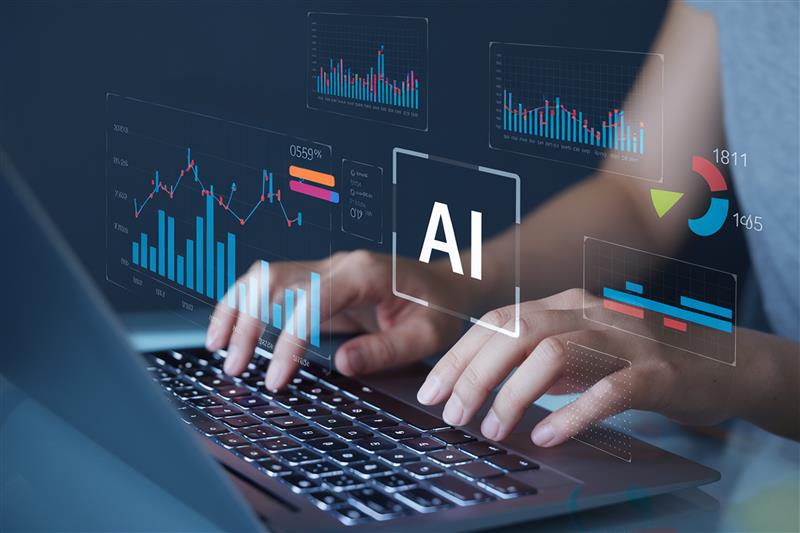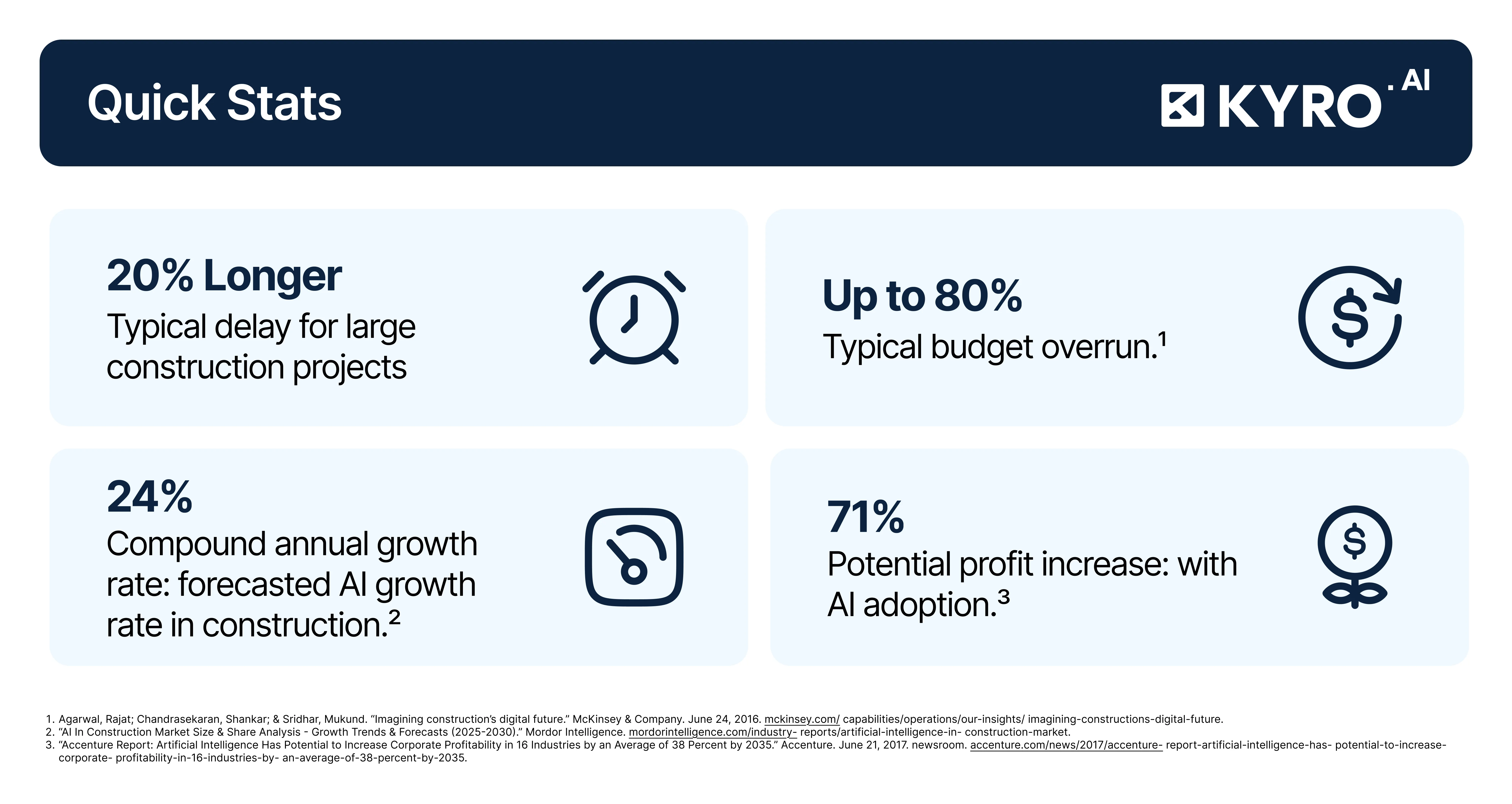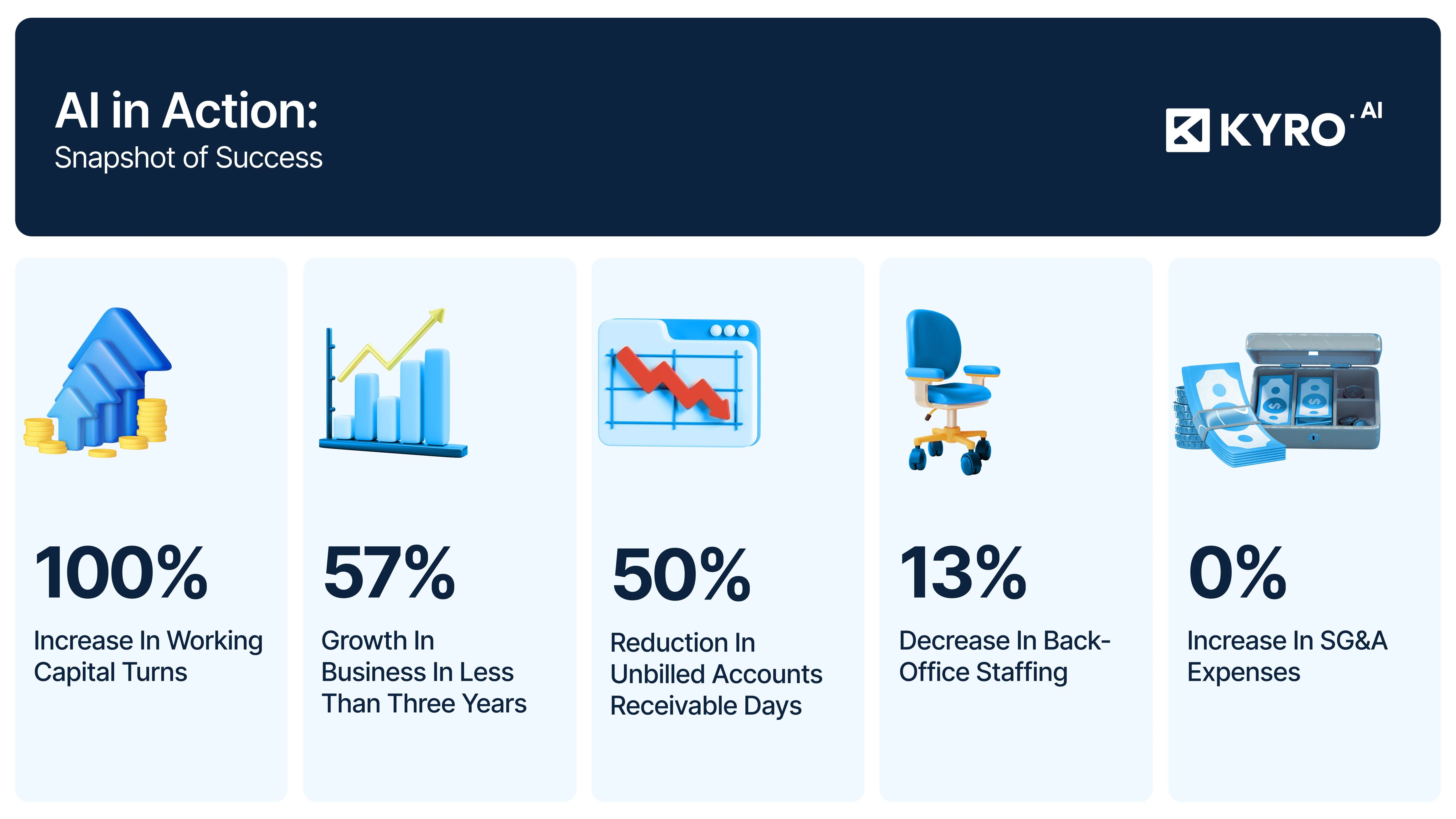
Copyright © 2025 by the Construction Financial Management Association (CFMA). All rights reserved. This article first appeared in May /June 2025 CFMA Building Profits magazine.
The landscape of utility construction finance is rapidly evolving, shaped by shifting regulations, economic pressures, and increased demand for sustainable infrastructure. Rising interest rates, tariff uncertainty, and inflation have inflated capital costs, straining project financing and long-term debt strategies.
Meanwhile, federal and state programs like the Inflation Reduction Act and the Bipartisan Infrastructure Investment and Jobs Act are injecting significant funding into water, energy, and broadband projects, prompting new financial strategies for public-private partnerships and municipal bond issuances. i
As utilities incorporate renewable energy; grid modernization; and reliability, resiliency, and rate affordability efforts, innovative funding tools like bonds and performance-based financing are becoming essential. Financial leaders in this sector must juggle cost control, compliance, and technology adoption to meet the demands of modern infrastructure delivery.
Historically, construction financial leaders — including construction financial professionals, CFOs, COOs, and CEOs — have leaned on retrospective data for budgeting and forecasting. But with today’s projects producing immense volumes of real-time data across labor, supply chains, and materials, those lagging tactics fall short.
Emerging research shows that artificial intelligence (AI) could boost construction profit growth by as much as 71% over the next decade.ii This article examines how applying the Pareto Principle (the “80/20 rule”) can guide companies to deploy AI where it delivers the greatest impact — helping to reduce risk, streamline operations, and accelerate digital transformation.
Despite the growing industry dialogue about AI, its real-world impact on construction finance remains limited. Common barriers include:

The Pareto Principle states that 80% of outcomes often stem from 20% of causes.vii
In the content of construction finance, this typically means a small number of processes generate the majority of cost overruns and/or data errors. Focusing on these key issues first — rather than attempting to automate everything at once — enables quick, high-impact results and builds the organizational confidence needed for larger-scale transformation.
A utilities infrastructure solutions provider specializing in electric utility operations across 14 U.S. states, routinely logs hours, expenses, and field observations that feed into payroll, customer invoices, and regulatory reports.
Projects are assigned sporadically and often in real time as crews arrive at the jobsite, and they can last days, weeks, and sometimes months. Work scopes are changed as projects progress, making project timelines and accuracy paramount to ensuring smooth billing and collections.
However, the company noticed recurring data latency issues:
The company used the 80/20 rule to identify processes most prone to errors, such as project setup discrepancies, timesheet anomalies, and real-time field updates that directly affect payroll, billing, and project reporting.
By fixing these high-impact areas, they aimed to prove AI’s value and pave the way for more robust digital transformation. The result was a more robust, real-time data collection process that included an AI “watchdog” to maintain pre-defined project parameters.

The following highlights some key AI-driven improvements:
By implementing AI, the company’s process improved in several ways, including:
Embracing AI is not just about adopting a new tool; it’s about transforming the entire approach to construction financial management.
The following four-phase plan can help any construction company looking to adopt AI, including mid-sized and smaller contractors.
Define Problems Clearly
Pinpoint and rank urgent bottlenecks based on potential impact. Perform a deep root-cause analysis on errors, delays, and cost overruns, and identify gaps and weaknesses in existing processes and data tools.
Assess Existing Tools
Determine if your enterprise resource planning (ERP) system and various time and project tracking tools can be enhanced or modified and where AI-enhanced tools might fill gaps.
List Must-Have Features
If a vendor lacks key functionality (e.g., offline mode or easy user interface), then consider upgrading to a more robust system.
Apply the 80/20 Rule
The 80/20 rule suggests that 80% of effects come from 20% of causes. By evaluating your business in phase one, it can help a company in establish the correct priorities.
Engage Stakeholders
Involve field managers and information technology, finance, human resources, and operations teams in the needs assessment process and overall solution design.
Select the Right Software as a Service (SaaS) Platform
Look for a user-friendly system that integrates with current and future workflows and can scale with the business. It may be helpful to retain an experienced, brand-agnostic solutions consultant to narrow down the list of potential providers and guide you through the selection process.
Enhance Collaboration & Communication
Automating schedule updates, documents, and project status will improve collaboration and communication between the different teams involved, including clients, contractors, suppliers, engineers, and field teams.
Start Small
Pick a high-impact area, such as timesheet automation or daily field updates, to launch the pilot. Choose a scope that’s narrow enough to control but visible enough to demonstrate value. Diligently measure output to ensure alignment with overall objectives and uncover potential process gaps.
Set KPIs
Track metrics such as time savings, error reduction, user adoption, and data accuracy. Clear, well-defined KPIs keep your efforts focused and make it easier to communicate results to leadership. Share early wins broadly to build buy-in and drive internal momentum.
Apply the 80/20 Rule
Focus on the 20% of tasks causing 80% of project disruptions — whether it’s project setup, field input, or invoicing. Prioritizing the biggest pain points increases the chance of early success, builds credibility for the initiative, and sets the stage for expansion.
Expand AI Use Cases
Incorporate budgeting, forecasting, risk assessment, and procurement. AI can help identify patterns, reduce manual input, and flag potential issues early — allowing teams to make faster, more informed decisions. As adoption grows, these functions become key drivers of both strategic planning and operational efficiency.
Embrace Continuous Learning
AI models and staff skill sets need regular refreshers. Integrate AI development learning tools into your learning management system. Continue refining your 80/20 priorities as your business evolves. Regularly solicit feedback from key stakeholders.
To be successful when adopting AI in construction finance, companies must create an environment where innovation can thrive.
Introducing AI is not a one-and-done process; it’s an organizational shift that will require:
For mid-sized or smaller contractors, consider starting with an affordable, off-the-shelf SaaS solution and limiting the pilot to a few high-visibility projects. This approach reduces upfront costs and complexity, enabling you to refine processes before rolling them out organization-wide or making large capital commitments prematurely.
The future of construction finance belongs to companies that blend human insight with AI-powered innovation. This isn’t just about adopting tools — it’s about reimagining how we work, decide, and lead.
If you haven’t yet embraced AI, then now is the time. Start small by setting clear KPIs, focusing on the field, and committing to continuous improvement.
By targeting the 20% of tasks causing 80% of the friction, AI can help shift operations from reactive to proactive — digitizing workflows, reducing risk, and increasing profitability.
The path ahead is clear. The next move is yours.
Hari Vasudevan, PE is the Founder and CEO of KYRO AI (kyro.ai) in Plano, TX. He is an entrepreneur and engineer at the forefront of AI, utilities, and construction management, driving transformative advancements in construction, vegetation, utility, and field services. Hari holds bachelor’s and master’s degrees in civil engineering, along with professional engineering licensure in multiple states. He also serves as vice chair and strategic adviser for the Edison Electric Institute’s Transmission Subject Area Committee. Hari can be reached at hari.vasudevan@kyro.us.
Link to the original article
------------------------------------------------------------------------------------------------------------------------------
[1] “Overview ofthe Bipartisan Infrastructure Law and the Inflation Reduction Act.” KansasLegislative Research Department. December 18, 2024. klrd.gov/2024/12/18/overview-of-the-bipartisan-infrastructure-law-and-the-inflation-reduction-act.
[2] “AccentureReport: Artificial Intelligence Has Potential to Increase CorporateProfitability in 16 Industries by an Average of 38 Percent by 2035.” Accenture.June 21, 2017. newsroom.accenture.com/news/2017/accenture-report-artificial-intelligence-has-potential-to-increase-corporate-profitability-in-16-industries-by-an-average-of-38-percent-by-2035.
[3] Agarwal,Rajat; Chandrasekaran, Shankar; & Sridhar, Mukund. “Imaginingconstruction’s digital future.” McKinsey & Company. June 24, 2016. mckinsey.com/capabilities/operations/our-insights/imagining-constructions-digital-future.
[4] “AI InConstruction Market Size & Share Analysis - Growth Trends & Forecasts(2025 - 2030).” Mordor Intelligence. mordorintelligence.com/industry-reports/artificial-intelligence-in-construction-market.
[5] “AccentureReport: Artificial Intelligence Has Potential to Increase CorporateProfitability in 16 Industries by an Average of 38 Percent by 2035.” Accenture.June 21, 2017. newsroom.accenture.com/news/2017/accenture-report-artificial-intelligence-has-potential-to-increase-corporate-profitability-in-16-industries-by-an-average-of-38-percent-by-2035.
[6] “Study fromAutodesk and FMI Finds Better Data Strategies Could Save the GlobalConstruction Industry $1.85 Trillion.” Autodesk. September 14, 2021. autodesk.com/blogs/construction/autodesk-fmi-study-global-construction-industry-data-strategies.
[7] Koch,Richard. “The 80/20 Principle: The Secret to Achieving More with Less.” 1997.
Copyright © 2025 by the Construction Financial Management Association (CFMA). All rights reserved. This article first appeared in May /June 2025 CFMA Building Profits magazine.
The landscape of utility construction finance is rapidly evolving, shaped by shifting regulations, economic pressures, and increased demand for sustainable infrastructure. Rising interest rates, tariff uncertainty, and inflation have inflated capital costs, straining project financing and long-term debt strategies.
Meanwhile, federal and state programs like the Inflation Reduction Act and the Bipartisan Infrastructure Investment and Jobs Act are injecting significant funding into water, energy, and broadband projects, prompting new financial strategies for public-private partnerships and municipal bond issuances. i
As utilities incorporate renewable energy; grid modernization; and reliability, resiliency, and rate affordability efforts, innovative funding tools like bonds and performance-based financing are becoming essential. Financial leaders in this sector must juggle cost control, compliance, and technology adoption to meet the demands of modern infrastructure delivery.
Historically, construction financial leaders — including construction financial professionals, CFOs, COOs, and CEOs — have leaned on retrospective data for budgeting and forecasting. But with today’s projects producing immense volumes of real-time data across labor, supply chains, and materials, those lagging tactics fall short.
Emerging research shows that artificial intelligence (AI) could boost construction profit growth by as much as 71% over the next decade.ii This article examines how applying the Pareto Principle (the “80/20 rule”) can guide companies to deploy AI where it delivers the greatest impact — helping to reduce risk, streamline operations, and accelerate digital transformation.
Despite the growing industry dialogue about AI, its real-world impact on construction finance remains limited. Common barriers include:

The Pareto Principle states that 80% of outcomes often stem from 20% of causes.vii
In the content of construction finance, this typically means a small number of processes generate the majority of cost overruns and/or data errors. Focusing on these key issues first — rather than attempting to automate everything at once — enables quick, high-impact results and builds the organizational confidence needed for larger-scale transformation.
A utilities infrastructure solutions provider specializing in electric utility operations across 14 U.S. states, routinely logs hours, expenses, and field observations that feed into payroll, customer invoices, and regulatory reports.
Projects are assigned sporadically and often in real time as crews arrive at the jobsite, and they can last days, weeks, and sometimes months. Work scopes are changed as projects progress, making project timelines and accuracy paramount to ensuring smooth billing and collections.
However, the company noticed recurring data latency issues:
The company used the 80/20 rule to identify processes most prone to errors, such as project setup discrepancies, timesheet anomalies, and real-time field updates that directly affect payroll, billing, and project reporting.
By fixing these high-impact areas, they aimed to prove AI’s value and pave the way for more robust digital transformation. The result was a more robust, real-time data collection process that included an AI “watchdog” to maintain pre-defined project parameters.

The following highlights some key AI-driven improvements:
By implementing AI, the company’s process improved in several ways, including:
Embracing AI is not just about adopting a new tool; it’s about transforming the entire approach to construction financial management.
The following four-phase plan can help any construction company looking to adopt AI, including mid-sized and smaller contractors.
Define Problems Clearly
Pinpoint and rank urgent bottlenecks based on potential impact. Perform a deep root-cause analysis on errors, delays, and cost overruns, and identify gaps and weaknesses in existing processes and data tools.
Assess Existing Tools
Determine if your enterprise resource planning (ERP) system and various time and project tracking tools can be enhanced or modified and where AI-enhanced tools might fill gaps.
List Must-Have Features
If a vendor lacks key functionality (e.g., offline mode or easy user interface), then consider upgrading to a more robust system.
Apply the 80/20 Rule
The 80/20 rule suggests that 80% of effects come from 20% of causes. By evaluating your business in phase one, it can help a company in establish the correct priorities.
Engage Stakeholders
Involve field managers and information technology, finance, human resources, and operations teams in the needs assessment process and overall solution design.
Select the Right Software as a Service (SaaS) Platform
Look for a user-friendly system that integrates with current and future workflows and can scale with the business. It may be helpful to retain an experienced, brand-agnostic solutions consultant to narrow down the list of potential providers and guide you through the selection process.
Enhance Collaboration & Communication
Automating schedule updates, documents, and project status will improve collaboration and communication between the different teams involved, including clients, contractors, suppliers, engineers, and field teams.
Start Small
Pick a high-impact area, such as timesheet automation or daily field updates, to launch the pilot. Choose a scope that’s narrow enough to control but visible enough to demonstrate value. Diligently measure output to ensure alignment with overall objectives and uncover potential process gaps.
Set KPIs
Track metrics such as time savings, error reduction, user adoption, and data accuracy. Clear, well-defined KPIs keep your efforts focused and make it easier to communicate results to leadership. Share early wins broadly to build buy-in and drive internal momentum.
Apply the 80/20 Rule
Focus on the 20% of tasks causing 80% of project disruptions — whether it’s project setup, field input, or invoicing. Prioritizing the biggest pain points increases the chance of early success, builds credibility for the initiative, and sets the stage for expansion.
Expand AI Use Cases
Incorporate budgeting, forecasting, risk assessment, and procurement. AI can help identify patterns, reduce manual input, and flag potential issues early — allowing teams to make faster, more informed decisions. As adoption grows, these functions become key drivers of both strategic planning and operational efficiency.
Embrace Continuous Learning
AI models and staff skill sets need regular refreshers. Integrate AI development learning tools into your learning management system. Continue refining your 80/20 priorities as your business evolves. Regularly solicit feedback from key stakeholders.
To be successful when adopting AI in construction finance, companies must create an environment where innovation can thrive.
Introducing AI is not a one-and-done process; it’s an organizational shift that will require:
For mid-sized or smaller contractors, consider starting with an affordable, off-the-shelf SaaS solution and limiting the pilot to a few high-visibility projects. This approach reduces upfront costs and complexity, enabling you to refine processes before rolling them out organization-wide or making large capital commitments prematurely.
The future of construction finance belongs to companies that blend human insight with AI-powered innovation. This isn’t just about adopting tools — it’s about reimagining how we work, decide, and lead.
If you haven’t yet embraced AI, then now is the time. Start small by setting clear KPIs, focusing on the field, and committing to continuous improvement.
By targeting the 20% of tasks causing 80% of the friction, AI can help shift operations from reactive to proactive — digitizing workflows, reducing risk, and increasing profitability.
The path ahead is clear. The next move is yours.
Hari Vasudevan, PE is the Founder and CEO of KYRO AI (kyro.ai) in Plano, TX. He is an entrepreneur and engineer at the forefront of AI, utilities, and construction management, driving transformative advancements in construction, vegetation, utility, and field services. Hari holds bachelor’s and master’s degrees in civil engineering, along with professional engineering licensure in multiple states. He also serves as vice chair and strategic adviser for the Edison Electric Institute’s Transmission Subject Area Committee. Hari can be reached at hari.vasudevan@kyro.us.
Link to the original article
------------------------------------------------------------------------------------------------------------------------------
[1] “Overview ofthe Bipartisan Infrastructure Law and the Inflation Reduction Act.” KansasLegislative Research Department. December 18, 2024. klrd.gov/2024/12/18/overview-of-the-bipartisan-infrastructure-law-and-the-inflation-reduction-act.
[2] “AccentureReport: Artificial Intelligence Has Potential to Increase CorporateProfitability in 16 Industries by an Average of 38 Percent by 2035.” Accenture.June 21, 2017. newsroom.accenture.com/news/2017/accenture-report-artificial-intelligence-has-potential-to-increase-corporate-profitability-in-16-industries-by-an-average-of-38-percent-by-2035.
[3] Agarwal,Rajat; Chandrasekaran, Shankar; & Sridhar, Mukund. “Imaginingconstruction’s digital future.” McKinsey & Company. June 24, 2016. mckinsey.com/capabilities/operations/our-insights/imagining-constructions-digital-future.
[4] “AI InConstruction Market Size & Share Analysis - Growth Trends & Forecasts(2025 - 2030).” Mordor Intelligence. mordorintelligence.com/industry-reports/artificial-intelligence-in-construction-market.
[5] “AccentureReport: Artificial Intelligence Has Potential to Increase CorporateProfitability in 16 Industries by an Average of 38 Percent by 2035.” Accenture.June 21, 2017. newsroom.accenture.com/news/2017/accenture-report-artificial-intelligence-has-potential-to-increase-corporate-profitability-in-16-industries-by-an-average-of-38-percent-by-2035.
[6] “Study fromAutodesk and FMI Finds Better Data Strategies Could Save the GlobalConstruction Industry $1.85 Trillion.” Autodesk. September 14, 2021. autodesk.com/blogs/construction/autodesk-fmi-study-global-construction-industry-data-strategies.
[7] Koch,Richard. “The 80/20 Principle: The Secret to Achieving More with Less.” 1997.